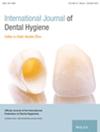Comparison of oral health status, oral hygiene management behaviours and satisfaction of patients with fixed orthodontic appliance and clear aligner: A quasi-experimental design
Abstract
Objectives
This study aimed to determine the overall oral health statuses of patients with fixed orthodontic appliance and clear aligner, as well as their oral hygiene management behaviours and satisfaction.
Methods
We selected 40 participants (20 each with fixed orthodontic devices and clear aligners) who visited a dental clinic. We conducted a survey to determine the oral hygiene management behaviours of the subjects and their satisfaction with their orthodontic treatment. Three measurements were also conducted at 4-week intervals to determine the oral health statuses of the subjects.
Results
The Löe and Silness gingival index of patients with fixed orthodontic appliances indicated moderate gingivitis (1.1 ± 0.3), and those with clear aligners had mild gingivitis (0.6 ± 0.4) (p < 0.001). The modified O'Leary index also indicated that the degree of dental plaque deposition in the oral cavity was lower in patients treated with a clear aligner (43.0 ± 18.2 points) than in those treated with a fixed orthodontic (28.1 ± 10.9 points) (p = 0.004). Regarding oral hygiene management, the fixed orthodontic group received scaling more frequently (p = 0.006), received more oral health education (p < 0.001) and had a longer brushing time (p = 0.008) than the clear aligner group. No significant difference was observed in satisfaction between the fixed orthodontic appliance and the clear aligner.
Conclusions
Regarding the oral health status by orthodontic appliance type, the clear aligner group had the advantages of reduction in dental plaque attachment and gingival health. The fixed orthodontic group exhibited better oral hygiene management behaviours. Satisfaction with orthodontic treatment was found to be similar for the two device types.

 求助内容:
求助内容: 应助结果提醒方式:
应助结果提醒方式:


